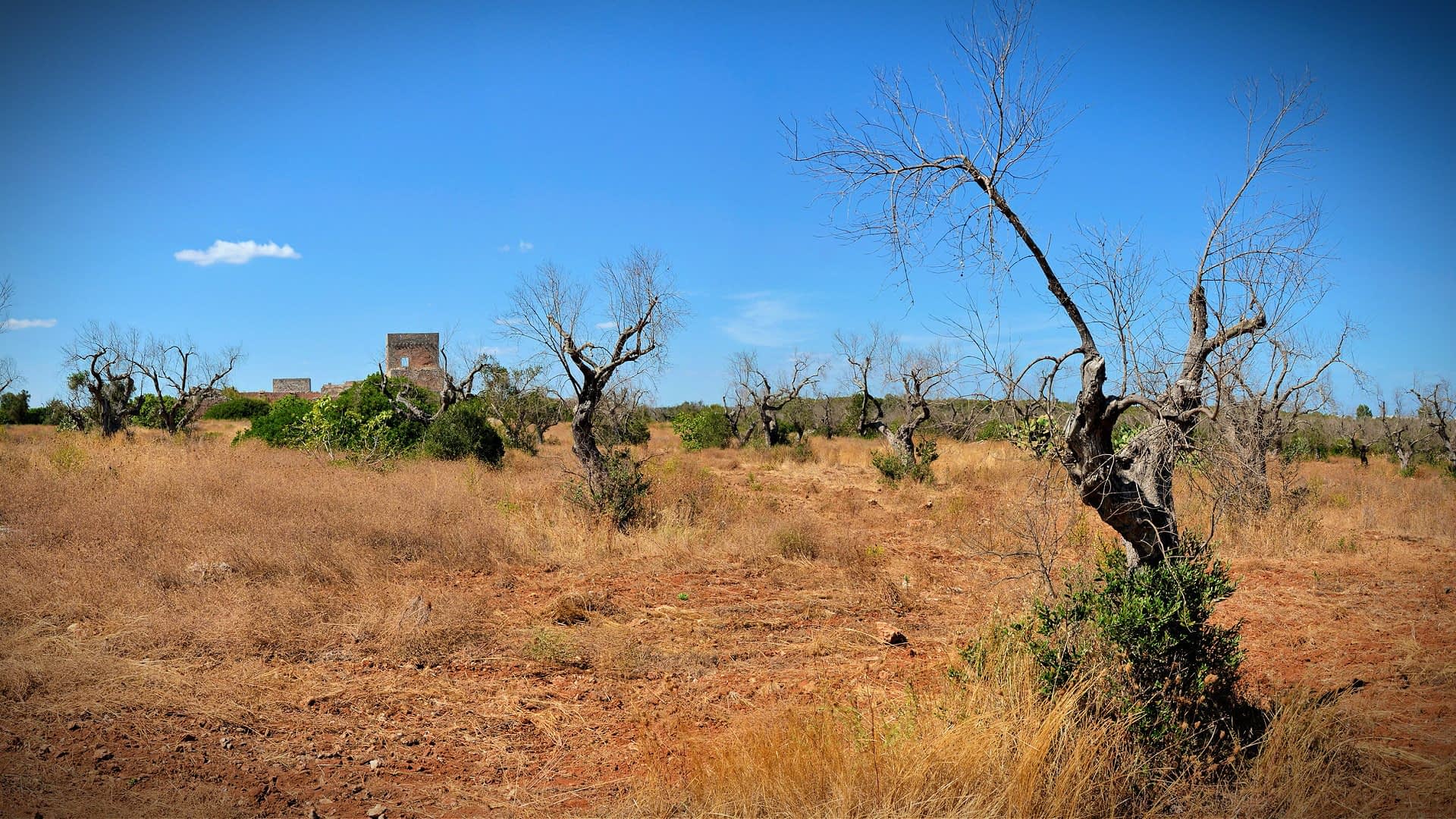New research has confirmed that another disease is spreading among olive trees in Puglia, along with the olive quick decline syndrome (OQDS) caused by Xylella fastidiosa pauca.
Scientists said the isolation of Neofusicoccum mediterraneum, a fungus that spreads quickly and damages the olive tree, is meaningful. The fungus might also attack trees already infected by Xylella fastidiosa.
We are now in the first phase of the study, and a full light has still to be shed on this phytosanitary problem. Then, on the basis of the acquired knowledge, it will be established how to manage the disease.
According to the “Neofusicoccum mediterraneum Is Involved in a Twig and Branch Dieback of Olive Trees Observed in Salento” study published in Pathogens, researchers have developed new insights on how to curtail the drying disease better. Still, many questions remain to be answered.
Massimo Pilotti, the corresponding author of the study, from the Research Center for Plant Protection and Certification (CREA-DC) in Rome, said the investigation “was prompted by the fact that a wilting phenomenon, characterized by previously unseen symptomatological features, was emerging in the olive groves since 2019.”
See Also:Research NewsHe emphasized how “finding a new wilting syndrome in Puglia adds further complexity to the phytosanitary status of olive growing in this region.”
“Several concerns are raised,” Pilotti added. “What is the impact of Branch and Twig Dieback (BTD) on olive-growing in Puglia? How many provinces are really affected? Is BTD actively spreading? Are BTD and OQDS overlapping in the same olive groves? And can they be confused with each other?”
“To date, nearly all these questions remain unanswered, but we are conducting in-depth investigations to shed full light on the matter,” he continued.
Pilotti noted how “the emotional impact of OQDS on olive growing in Puglia, as well as the historical knowledge of verticillium wilt, another well-known wilting disease of the olive tree, can make BTD go unnoticed. Thus, it is necessary to reveal the nature of the disease.”
The researcher confirmed that correctly distinguishing BTD and OQDS onset might be challenging.
“Symptoms of BTD are similar to OQDS at first glance or if wilting occurred for a long time,” Pilotti said. “Really, when symptoms are appearing, BTD and OQDS are distinguishable by BTD’s typical red-bronze necrotic patches appearing on the leaf blades followed by the leaves curling downward.”
“Certainly, a correct and definitive diagnosis is only based on pathogen isolation or molecular pathogen detection,” he added.
The role of Neofusicoccum mediterraneum in BTD remains to be assessed.
“Let’s not make the basic mistake of considering Neofusicoccum mediterraneum as the only agent of BTD,” Pilotti said. “This still has to be fully demonstrated, though the fungus reacted highly aggressively in our pathogenicity tests.“
The researchers added how the fungus was found in the first survey, “and certainly its presence is a relevant finding as it is well known in other countries (Spain, the United States) as the main agent of BTD.”

“However, in those countries, additional fungal species have been found associated with BTD and were shown to contribute to disease development,” Pilotti said. “Thus, we will have to examine a large number of samples from the different areas where BTD emerged to definitively clear the etiology of the disease and the associated mycobiota.” All the fungi present in a specific habitat constitute the mycobiota.
The researchers also noted how Neofusicoccum mediterraneum had been reported in Apulian olive groves by other researchers 13 years ago. However, the researchers only found the fungus on fruits and only with a minimal frequency.
Pilotti hypothesized that the fungus “changed its relationship with the host due to the natural selection of new pathogenic strains or simply changed its aggressiveness as a consequence of changes in the ecological niche of the olive groves.”
The CREA-DC researcher also explained how the fungus and other Botryospaeriaceae fungi can infect and damage many perennial agricultural and naturally-occurring species in which a latent phase alternates with full virulence according to the degree of stress suffered by the host.
“Important crop species susceptible to Botryospaeriaceae fungi species are: grapevine, almond, pistachio, walnut and citrus,” Pilotti said.
See Also:New Projects in Puglia Emphasize Early Detection Against XylellaScientists also explained how the BTD develops in the region still has to be assessed.
“In general, Botryospaeriaceae fungi species infect the host plant by entering through the wounds caused by pruning tools and canopy-contact mechanical harvester tools, which also facilitate inoculum spread within and between the orchards,” Pilotti said.
“Occurrence of frost and hailstorms is another possible wound-linked infection mechanism,” he added. “In addition, in the presence of wounds, rain or any splashing water plays a role in spreading the fungal inoculum and facilitating the reach of the entry points.”
Given the ongoing progress in the investigations, the researchers noted how “crucial it is to be aware of the presence of this disease in order not to confuse it with OQDS or verticillium wilt.”
“We recorded super-infections with the agents of both OQDS and BTD,” Pilotti said. “Thus, wondering whether the presence of disease conditions the progress and the severity of the other is fair.”
The researchers believe that it is very relevant to discriminate between the fungus and the Xylella fastidiosa infections.
“For example, in the evaluation tests of the effectiveness of OQDS control strategies, it should be ensured that the treated plants are not also affected by BTD,” Pilotti said. “If wilting phenomena erroneously attributed to Xylella fastidiosa continue to occur on trees treated to restrict OQDS, this can generate a misinterpretation of the real efficacy of the control interventions.”
“Moreover, we cannot expect that a control strategy effective against one disease is so even against the other,” he added.
Among the urgent goals of the current research is to define potential containment measures for the fungus, as it might be possible that it is spreading and it could reach other areas.
“We are now in the first phase of the study, and a full light has still to be shed on this phytosanitary problem,” Pilotti said. “Then, on the basis of the acquired knowledge, it will be established how to manage the disease.”
“Importantly, to date, we observed that the olive groves not recently pruned are not affected by the symptomatology,” he continued. “This seems to be relevant for understanding the diffusion modalities of the disease and consequently, if confirmed, establish effective containment measures.”
The researchers next hope to expand sampling in all affected areas, identify the associated fungi, assess their pathogenicity and identify epidemiological factors facilitating the spread of the disease.








